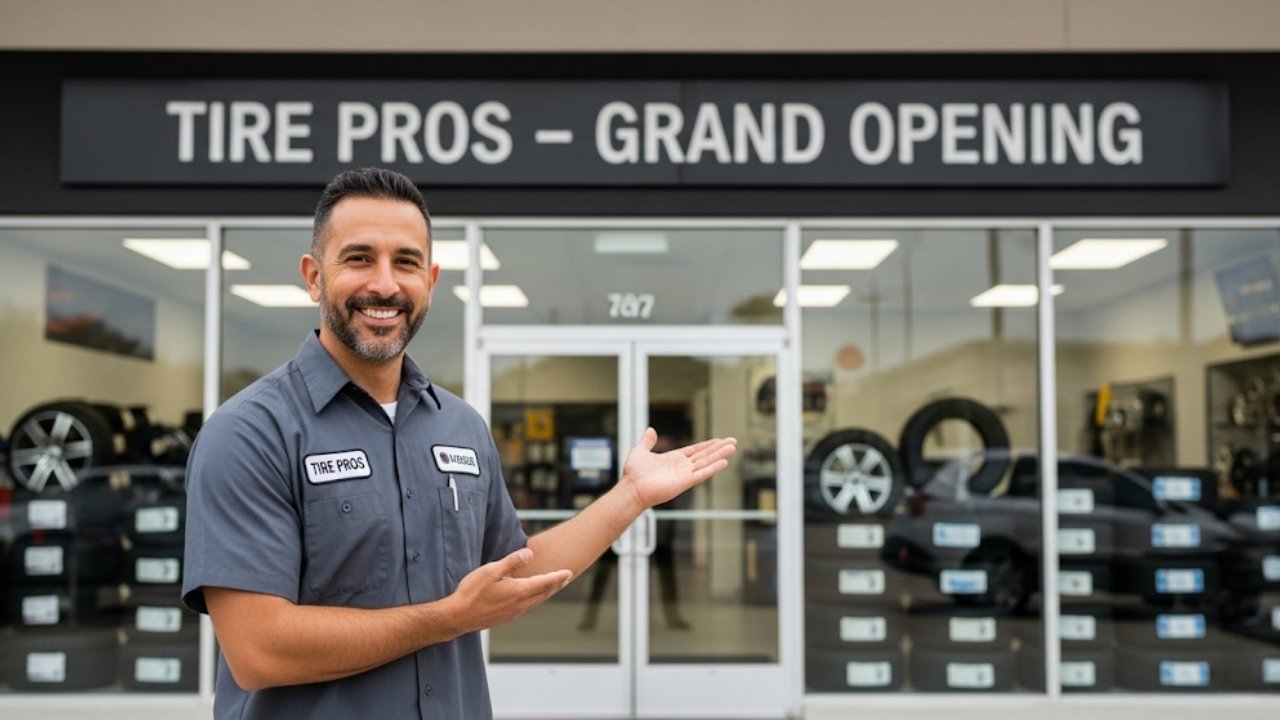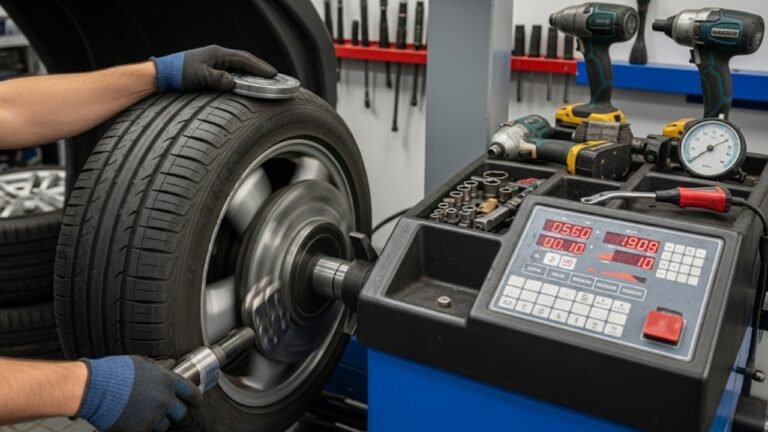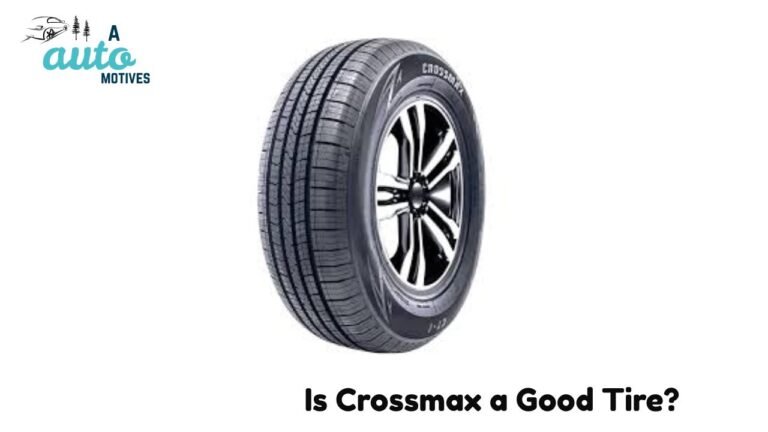How to Start a Tire Business: A Friendly Guide

Have you ever had a flat tire on a lonely road? I have. It was pouring rain, and I was already late for work. That moment stuck with me—not because of the inconvenience, but because of the man who helped me. He owned a tire shop, just a block away, and his quick service saved my day. That one small act made me think: “What if I could help people like that and make a living too?”
Starting a tire business is more than just selling rubber circles. It’s about trust, safety, and being part of a community. It’s about becoming someone people rely on when they’re stuck. In this guide, I’ll show you how to start a tire business, step by step, based on real experiences, cultural insights, and a lot of hands-on knowledge.
Let’s dive into the tread and get rolling!
Why Start a Tire Business?

Here are some good reasons to consider this business:
-
Evergreen demand – Tires wear out, get punctured, or need upgrading.
-
Low entry barrier – You don’t need a fancy degree to get started.
-
Flexible business models – Sell new tires, used tires, offer mobile services, or add alignment and balancing.
-
Community connection – Local customers often return if you offer good service.
Let’s break this down in a simple table:
| Benefits of a Tire Business | Description |
|---|---|
| Constant demand | Tires wear out regularly; new ones are always needed |
| Recurring customers | Good service ensures repeat visits |
| Moderate startup costs | You can start small and scale up |
| Easy to learn | No formal education needed, just some hands-on skill |
| Add-on services for more profit | Alignment, repair, balancing, etc. |
So if you’re the kind of person who loves hands-on work and values independence, starting a tire business might just be your highway to success.
Step 1: Learning the Trade First
Before jumping in, get your hands dirty—literally. You can’t start a tire business without understanding what tires actually do, how they wear, and how to sell or install them. And no, watching YouTube tutorials isn’t enough.
Here’s how I learned:
-
Worked part-time at a tire shop in my neighborhood.
-
Got familiar with tools like air compressors, jacks, and balancers.
-
Learned the difference between radial, bias-ply, tubeless, and winter tires.
-
Observed how the shop owner dealt with suppliers and customers.
You don’t need to become an engineer, but basic knowledge is crucial. If you don’t want to get your hands greasy, at least hire someone who has.
Pro Tip: Look for short vocational courses in auto service or tire installation. Some are even free.
Think of it like cooking. You don’t open a restaurant if you’ve never boiled water. Learn the trade. Feel the rubber. Smell the garage. Experience matters.
Step 2: Choosing the Right Location
Your tire business needs the right spot—like a fruit seller choosing the busiest corner in a market. A great location brings in steady footfall, drive-by traffic, and easy accessibility.
Here’s what to look for:
-
Busy roads or highways – More cars = more customers.
-
Industrial or transport zones – Trucks need tires more often.
-
Near repair garages – Cross-referrals can help.
-
Good visibility – Clear signs and a clean setup attract attention.
But don’t just pick a place because it’s cheap. Location is like sunlight for a plant—it decides how well your business grows.
Let me share something personal. When I was helping a friend open his shop, we found a low-rent space near a residential area. The rent was great. But there was almost zero car traffic. After three months, he had to move to a busier corner, and guess what? His earnings tripled.
Lesson? Don’t compromise location for cost. A good spot pays for itself.
Step 3: Building Your Business Plan
Now that you’ve got the passion and location, it’s time for planning. A business without a plan is like a car without GPS—you’ll get lost fast.
Your tire business plan doesn’t have to be fancy. Just include the following:
Key Elements of a Tire Shop Business Plan
-
Startup costs – Equipment, inventory, rent, permits.
-
Target market – Cars? Trucks? Motorcycles? Fleet businesses?
-
Pricing strategy – How will you compete with others?
-
Marketing approach – Local ads, word of mouth, online presence.
-
Monthly projections – Sales, expenses, profit goals.
-
Break-even point – How many tires must you sell to cover costs?
Use this simple breakdown:
| Category | Estimated Cost (USD) |
|---|---|
| Shop rent (monthly) | $1,000 |
| Tire inventory | $5,000 – $10,000 |
| Tools & equipment | $2,500 |
| Licenses/permits | $500 |
| Staff (2 people) | $3,000/month |
| Marketing | $500/month |
Tip: Don’t forget unexpected costs like electricity, waste disposal, or insurance. They add up fast.
Step 4: Registering and Licensing Your Tire Business
This part may seem boring, but it’s critical. Skipping legal steps can bring big trouble later.
You’ll need to:
-
Choose a business structure – Sole proprietorship, LLC, or partnership.
-
Register your business name – Make it catchy and relevant.
-
Apply for business licenses – Check your city/state laws.
-
Get an EIN – Employer Identification Number from IRS (USA).
-
Open a business bank account – Keep your finances clean.
-
Get insurance – Liability, worker’s comp, property, etc.
Depending on your country, you may also need:
-
Environmental clearance – Tires can pollute.
-
Fire safety certification – Especially if you store a lot of inventory.
When I helped my cousin open his shop, we skipped insurance the first few months to save money. A small fire in the back room nearly wiped him out. That lesson? Never skip insurance. It’s not an expense—it’s peace of mind.
Step 5: Buying Equipment and Setting Up Your Shop
Once the paperwork’s done, it’s time to gear up. Setting up a tire business is like building a kitchen—you need the right tools to cook a good meal.
Must-Have Equipment:
-
Tire changer machine – For mounting and removing tires.
-
Wheel balancer – To balance the tire after fitting.
-
Air compressor – To inflate tires.
-
Floor jacks and lifts – For easy vehicle access.
-
Hand tools – Wrenches, screwdrivers, tire levers.
-
Inventory rack – To organize tires neatly.
Here’s a helpful chart:
| Equipment | Average Cost |
|---|---|
| Tire changer | $1,500–$3,000 |
| Wheel balancer | $1,000–$2,000 |
| Air compressor | $300–$800 |
| Hydraulic jack | $150–$500 |
| Hand tools & sets | $300–$500 |
Tip: Don’t go cheap on tools. A good machine makes your job easier and faster. That means more customers served and less stress.
Step 6: Sourcing Tires for Your Business
Now let’s talk rubber—literally. You can’t sell tires without… well, tires. But where do you get them?
You have 3 main sourcing options:
-
Authorized tire distributors – For brand-new, warrantied tires.
-
Used tire wholesalers – Great for budget-conscious customers.
-
Importers or direct manufacturers – Bulk buying can save money.
Things to check when choosing a supplier:
-
Minimum order quantity (MOQ)
-
Discounts for bulk purchases
-
Delivery speed
-
Return policy
-
Warranty terms
Let’s say you want to sell both new and used tires. That’s smart. Used tires have a higher profit margin and move faster in low-income areas. But be careful—safety first. Only sell tires with good tread and no internal damage.
Step 7: Marketing Your Tire Shop
You’ve got the shop, tools, and stock. Now it’s time to let the world know you’re open for business!
Marketing Ideas for Your Tire Business:
-
Put up bold signage – Clear and catchy signs bring in passersby.
-
List your shop on Google My Business – Get reviews and show up in maps.
-
Run local ads – In community papers, radio, or social media.
-
Offer opening promotions – Buy 3 tires, get 1 free deals work well.
-
Partner with rideshare drivers – They always need tires.
I helped a friend set up a Facebook page for his tire shop in Dhaka. Within weeks, he got dozens of DMs asking for prices and services. Don’t underestimate the power of digital marketing—even for a traditional business.
Step 8: Hiring the Right Team
Even if you plan to do most of the work yourself at first, eventually you’ll need help. A good team can make or break your tire business.
Here’s what to consider:
-
Technicians with experience in tire mounting, balancing, and repair.
-
Customer service reps if you want someone at the front desk.
-
Delivery drivers or mobile tire technicians if you offer remote services.
-
Mechanics if you expand to suspension or alignment services.
You don’t always need the most experienced people—you need reliable, trainable, and customer-friendly staff. When I helped a friend interview workers for his garage, we chose a young guy with no background but a great attitude. Within weeks, he was handling tire repairs like a pro.
Train your staff well. Make sure they understand the importance of:
-
Safety protocols
-
Proper equipment use
-
Customer respect
-
Honest service
A team that respects your values will build your reputation faster than any marketing campaign.
Step 9: Managing Inventory and Keeping It Lean
Let’s be honest: tires take up a LOT of space. Managing inventory efficiently is key to keeping costs down and customers happy.
Here are tips that worked for me:
-
Start small – Focus on the most in-demand tire sizes.
-
Track fast movers – Notice which brands and types sell the most.
-
Avoid overstocking – Tires can degrade if they sit too long.
-
Rotate inventory – Oldest stock should sell first.
Create a simple inventory table:
| Tire Type | Size | Stock | Supplier | Last Ordered |
|---|---|---|---|---|
| All-Season (New) | 195/65R15 | 30 | BrandX | 2 weeks ago |
| Used Tires | 205/55R16 | 15 | Local dealer | 1 week ago |
| Truck Tires | 245/75R16 | 10 | Importer Y | 3 weeks ago |
Use spreadsheets or inventory software if you can. Even a whiteboard helps.
Mistake to avoid: Buying every tire in every size. Don’t try to please everyone. Special orders can be arranged when needed—don’t lock up your money in slow stock.
Step 10: Offering Value-Added Services
To stand out from the crowd, offer services beyond tire sales. These extras bring in more revenue and keep customers loyal.
Here are some ideas:
-
Tire rotation – Extends tire life.
-
Wheel alignment – Prevents uneven wear.
-
Flat repair and patching – Quick and profitable.
-
Nitrogen inflation – More stable tire pressure.
-
Mobile tire change – Big win for busy drivers.
One small garage I worked with started offering free tire pressure checks and got more walk-ins every week. Little things make a big difference.
You could also:
-
Sell rims and alloy wheels
-
Offer winter/summer tire storage
-
Provide fleet services for local businesses
The goal? Make your shop a one-stop tire solution.
Step 11: Building Customer Trust and Loyalty
In the tire world, trust is gold. People want to feel safe driving their families. They need to know you’re not selling them junk rubber or charging unfair prices.
Here’s how to build loyalty:
-
Be honest – If a tire can be repaired instead of replaced, tell them.
-
Offer guarantees – On new tire installations and balancing.
-
Keep records – So when a repeat customer comes, you know their history.
-
Send reminders – For tire rotations or alignments.
Offer a loyalty card:
Buy 4 tire services, get 1 free.
Small perks = long-term customers.
I’ve seen shops that give away coffee, Wi-Fi, or even car fresheners. It may sound silly, but customers love thoughtful details.
Step 12: Scaling and Expanding
Once your tire business is rolling smoothly, think about growth.
Here are smart ways to expand:
-
Open a second location – Use what you’ve learned in your first shop.
-
Start a mobile service van – Bring tires to your customer’s door.
-
Sell online – Offer booking, tire browsing, and even delivery.
-
Add related services – Oil changes, brake pads, battery checks.
-
Wholesale supply – Sell tires to smaller garages nearby.
Be cautious, though. Don’t grow too fast. Make sure your first shop is running profitably with systems in place before you branch out.
When one of my mentors expanded too quickly to a second city, poor staffing and oversight made the new shop bleed money. Lesson learned: Scale smart, not just fast.
⚠️ Common Mistakes to Avoid When Starting a Tire Business
Even with the best intentions, beginners make mistakes. Let me share some common ones I’ve seen:
-
Not researching local competitors
-
Skipping business registration or insurance
-
Hiring the wrong people too fast
-
Buying too much inventory too soon
-
Ignoring online marketing
-
Overpromising and underdelivering
Remember: slow, steady, and honest always wins.
❓ Frequently Asked Questions (FAQs)
1. How much does it cost to start a tire business?
It depends on the size and services, but for a small shop, expect $10,000–$25,000 in startup costs. This includes rent, inventory, equipment, and permits.
2. Do I need a license to sell tires?
Yes. You typically need a business license, sales tax registration, and local permits. Check with your city or county for exact rules.
3. Can I start a tire business from home or online?
Technically yes, but it’s limited. Some people start by reselling used tires online or doing mobile installations. For full service, a physical shop is better.
4. What tire brands should I sell?
Start with popular and trusted brands like Michelin, Bridgestone, Goodyear, and budget options like Hankook or Falken. Keep a mix to match customer budgets.
5. Are used tires profitable?
Yes. If sourced safely and sold responsibly, used tires can have a higher profit margin than new ones. Just make sure they meet safety standards.
6. What skills do I need to run a tire shop?
You should understand tire types, installation basics, customer service, basic bookkeeping, and safety protocols. Hiring experienced staff helps too.
7. How long before I make a profit?
With smart planning and good location, many shops break even within 6–12 months. Profit depends on your pricing, traffic, and repeat customers.
8. How do I advertise my tire business locally?
Use Google Maps, flyers, vehicle decals, Facebook ads, local partnerships, and word of mouth. Offer promotions to attract first-time buyers.
Final Thoughts: Keep It Rolling
Starting a tire business is like building a bridge. The first few steps are slow, shaky, and uncertain. But once the structure is up, you’ll have something strong, useful, and lasting.
It’s a trade that connects you with real people—families going on road trips, delivery drivers rushing to drop off packages, moms picking up their kids from school. You’re not just selling tires. You’re keeping lives moving.
So, if you’re ready to take the first step, don’t wait. Do your research, find your spot, talk to mechanics, build your plan—and roll forward.
Because every big journey… starts with good tires.




